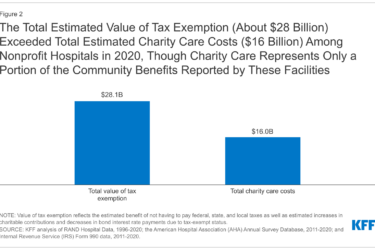Now that Medicaid expansion is uncertain in a number of states, it’s likely that some low-income people who might have been covered will not be – at least not in 2014.
You’re probably hearing, from some quarters at least, the mistaken argument that the uninsured working poor don’t need help – that they (and for that matter, undocumented immigrants) can get all the care they want, for health problems big or small, at no cost, at emergency rooms.
That’s not what the law – the Emergency Medical Treatment and Active Labor Act (EMTALA) – says. It says people need to be stabilized, regardless of ability to pay. It doesn’t mean that the hospital can’t at least try to collect the fee later. And it doesn’t mean that the patient gets more than the emergency stabilization – not necessarily any follow up, management of a chronic condition, or ongoing treatment of a disease diagnosed in the ER.
But today we take this life-saving, stabilizing, no-turning-away patients practice for granted. It wasn’t always this way. Noam Levey of the Los Angeles Times recently took a look at how EMTALA came to be, and the abuses it corrected. (Levey wrote it before the Supreme Court ruling, when there was speculation that the whole health law could be overturned, meaning millions might continue to rely on the emergency room as a main source of care. But his story is just as interesting under the actual post-SCOTUS scenario.)
Noam began with a trauma patient: a young man “unconscious and bleeding from his face and head after being hit by a car.” The emergency department and surgeons ran tests and scans and surgery. He got that treatment under EMTALA which has “been a bedrock principle of American healthcare – passed by a bipartisan Congress, signed by a Republican president and largely unchallenged since by hospitals and doctors.”
“Whether people know it or not, whether people appreciate it or not, access to emergency care became a right in this country in 1986,” said Dr. Wesley Fields, an emergency room physician in Orange County. “But the law that did that never addressed the big question of whose responsibility it was to deal with the cost.”
Levey reports that the big push for EMTALA came about 30 years ago after stories like that of a pregnant woman named Sharon Ford. She was turned away from two private hospitals who – wrongly – believed she was uninsured. One turned her away even after a fetal monitor found signs that her baby was in distress. An emergency caesarean at a public hospital came too late. The baby had died.
Other stories like hers circulated. It was reported that one hospital in Chicago “placed yellow stickers on the charts of patients without private insurance to avoid admitting them.” Pressure built in the states, and then Congress, and it was bipartisan. EMTALA was included in a huge budget deal signed by President Reagan in 1986.
Abuses declined. The payment problems didn’t. The uninsured still account for about 1 in 5 emergency department visits, the story reported.
“Those costs have prompted financially strapped hospitals to rely on a complex system of shifting costs. Most of the burden falls on taxpayers, with the government providing tens of billions of dollars annually to help hospitals care for the uninsured. Privately insured Americans also pay a price as insurers raise premiums to reflect higher charges from hospitals.
In the past, the cost shifting was cited by many conservatives as a reason why the federal government should require Americans to have health insurance.”
 Joanne Kenen (@JoanneKenen) is AHCJ’s health reform topic leader. If you have questions or suggestions for future resources, please send them to joanne@healthjournalism.org.
Joanne Kenen (@JoanneKenen) is AHCJ’s health reform topic leader. If you have questions or suggestions for future resources, please send them to joanne@healthjournalism.org.That consensus has eroded; conservatives are now generally focused on lowering the cost for government programs and the insured, not expanding coverage.
As you report on your state’s decision-making about Medicaid expansion, looking at the pressures on your local emergency rooms may be one good place to start.









